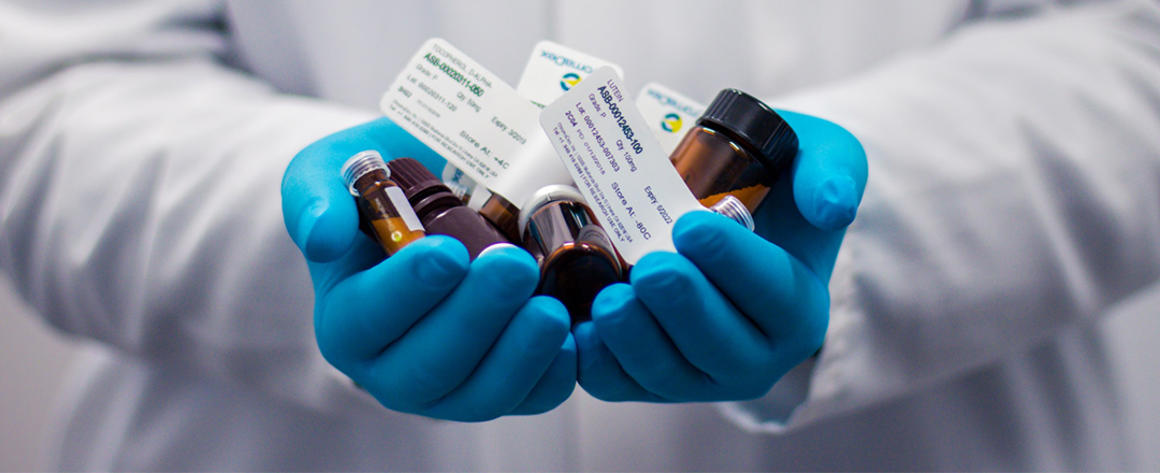Introduction
Far too many people have suffered and died because our medicines and medical products system was not prepared to respond to the COVID-19 pandemic with prompt and universal access to reliable tests, treatments, and vaccines. Governments, nonprofits, and industry in the U.S. and around the world are working furiously to catch up. But their efforts have been hampered by fundamental flaws in our profit-driven pharmaceutical industry.
For Americans with diabetes, cancer, asthma, infectious diseases, mental illnesses, and a myriad of other health issues, those flaws have been causing suffering and even death for decades. From growing shortages in essential medicines, to lagging innovation, dangerous mislabeling and misbranding, and the highest prices in the world, America’s pharmaceutical sector is clearly not meeting the needs of our society. The current crisis has brought these problems into even sharper focus.
Now is the time to redesign our medicines system to effectively, equitably, and rapidly address and anticipate crises like the current pandemic. This can and must be done while also providing a safe, consistent, and affordable supply of essential medicines to all, including persons with health challenges beyond COVID-19.
Medicines were long considered a public good, off-limits to corporate profiteering, price-gouging, and monopolizing. It is time for us to reclaim them as such. We must transform the U.S. pharmaceutical sector so that our nation can successfully combat this crisis, prepare for the next one, and ensure that millions of people have access to the essential medications they need to live healthy lives, and participate in society and the economy.
The four steps
To do so, we must take these four steps:
1. Codify open science practices that accelerate innovation, reduce costs, and strengthen the evidence base on which our medicines system rests.
“Open science”—broad, ready, equitable access to scientific knowledge, and to the data that generates that knowledge, across a drug’s entire lifecycle—is essential to focusing research and development activity on the most crucial health needs, accelerating R&D, expanding competition and preventing monopolization, and reducing costs. We must provide access to the “means, methods, and materials” of biomedical innovation, including various preclinical, clinical, and financial data that is currently kept mostly hidden by industry, government, and academia.
This could be done in two phases. In phase one, the National Institutes of Health (NIH), the Food and Drug Administration (FDA), and other public agencies—including the public sector vaccine and pharmaceutical agencies we describe below—would begin discretionary sharing of preclinical and clinical data they hold. Government-held results of experiments and clinical trials, and information on the costs of this research, can and should be shared regardless of if the results are generated by government, industry, or academia. Such data sharing would make it easier for researchers to replicate research findings, reduce redundancy and other inefficiency, and speed the development of new therapies.
Phase one could be achieved immediately, through agency discretion, without changes to existing law. However, Congress could maximize public benefit by making this data sharing mandatory.
Phase two would extend open science to manufacturing. Sharing data and know-how on manufacturing processes would accelerate development of new drugs, especially biologics and biosimilars. This would break monopolies and lower sky-high prices.
To achieve this, Congress should amend federal statute (such as the Food, Drug, and Cosmetic Act or the Biologics Price Competition and Innovation Act) to require manufacturers and the FDA to share information that is currently protected as trade secrets once the appropriate exclusivity period has passed. Congress should also provide the FDA and Department of Health and Human Services (HHS) discretion to share manufacturing information—and clinical data, too—sooner, before the exclusivity period expires, to accelerate competition in the event of anticompetitive conduct or pressing public health needs. The Patent Act should also be reformed to raise the bar to patentability, require patent owners to disclose more useful information, and discourage dense patent “thickets” that overprotect drugs’ manufacturing processes.
2. Create public sector capacity for full-cycle pharmaceutical innovation and production of essential medicines.
The U.S. should establish a public full-cycle pharmaceutical research and development institute and one or more public sector pharmaceutical manufacturers. These institutions would work together based on a new bottom line: the public good. The American public already funds many breakthroughs in the discovery and development of new drugs—far more than even the largest drug companies. But we currently depend on those companies, and the profit motive, to get those breakthroughs to patients.
Public sector institutions could work together to reimagine the innovation cycle from beginning to end. They could direct discovery efforts at the disease areas most important to public health, and lead the world on open science, embracing and expanding on the data sharing asked of industry. Additionally, as public sector actors, these institutions would benefit from the “patient capital”—investment not expected to turn a quick profit—needed to engage in the long-term, uncertain process of discovering and developing truly revolutionary science.
Public pharmaceuticals would lower prices, return revenues to public balance sheets and reduce inefficiencies while building in surge capacity for crises. They would foster a more resilient supply chain and ensure broad, equitable access to new drugs through public-interest management of its inventions. These institutions would be a source of stable, public sector jobs (themselves an upstream investment in health).
By breaking Big Pharma’s monopoly on our medicines supply, public sector institutions would also begin to erode its capture of our political system. The U.S. public sector has a long tradition of path-breaking innovation, from development of the internet to HIV prevention therapy to putting people on the moon. It is incumbent upon us to also wield the full power of that public sector innovation-engine to develop the medicines our society most needs, and assure equitable access to them.
3. Use the full power of compulsory licensing to ensure access to essential medicines.
The federal government should use its existing compulsory licensing power to either directly manufacture essential medicines or allow others to do so. This will ensure adequate supplies and equitable, affordable access. Under two different U.S. statutes, we already possess full legal rights to bypass the barriers of privately-held medicine patents.
There is a long history of the U.S. government issuing compulsory licenses to respond to crises like the one we face today, ensuring affordable access to medicines and technologies in the medical, energy, and other sectors.
In response to the COVID-19 pandemic, several nations are already taking steps to issue compulsory licenses for medicines (and other medical technologies). Beyond the present pandemic, we must also recognize the everyday crises of lack of access to many essential medicines—whether driven by shortages or prohibitive costs—and use compulsory licensing any time access issues jeopardize public health.
Extending the U.S. government’s compulsory licensing power beyond patents to trade secret manufacturing information and regulatory exclusivities (as described above) will ensure that these barriers do not jeopardize public health either. Compulsory licenses call for a reasonable royalty to be paid to the holder of the patent instead of the typical massive monopoly mark-up. Therefore, prescription drugs manufactured through compulsory licensing can be much cheaper, while innovators are nonetheless compensated for their work.
4. Take the vaccine industry into public ownership to assure its products are available to all.
Vaccines are not an effective market good; in fact, they are an essential public good. Only a robust, public program of vaccine development and production can meet our public health challenges. In a profit-driven pharmaceutical industry, vaccines for infectious diseases simply do not offer the kind of return on investment that owners believe they deserve.
This has led most major pharmaceutical companies to pull out of vaccine development altogether, leaving us with a highly consolidated and non-competitive oligopoly of producers–none with the capacity to alone produce a coronavirus vaccine at scale. Yet, current U.S. policy is built on the presumption that these same disinterested corporate actors are the only ones capable of bringing vaccines to market, despite many historical examples to the contrary. De-privatizing the vaccine industry would be a major step towards establishing the full public sector capacity needed to assure essential medicines are accessible to all.
Such de-privatizations in times of emergency are commonplace, and the U.S. has specific experience with public sector mobilization of vaccine development and production, including our highly successful vaccine program during World War II. A public laboratory in Canada recently led the development of the Ebola vaccine. And the U.S. public has already invested billions in vaccine development through federal agencies.
By taking the vaccine industry into full public ownership, we can provide an internationalized response to this and future pandemics that properly recognizes vaccines as a global public good. Vaccines developed in the public sector could be licensed through a global pool—or developed and marketed without patents altogether—so that they are available to all, ensuring the prompt and equitable access necessary for coherent public health interventions. A federal vaccine development agency could break with industry’s tradition of secrecy and commit itself to data sharing, accelerating innovation around the world.
Conclusion
The COVID-19 pandemic has revealed shocking deficiencies in our country’s commitment to the health of all Americans. The choice to prioritize corporate profits over the research, development, and distribution of effective, affordable medicines has proven deadly, just as it has for Americans who have been facing dire access challenges for decades. We are confronting the challenge of our lifetimes without the tests, treatments and vaccines we need. Yet, more and more public money is being pumped into a system best placed to produce duplicative “me-too” drugs that generate excessive profits but have little to no impact on public health.
The pandemic has taught us a brutal lesson: it is time to reclaim our medicines system for the public good. These four steps are the way to begin.
Related articles
- Dana Brown and Christopher Morten, “Four Steps to Transform the Pharmaceutical Industry and Survive the Pandemic”
- Dana Brown, “It’s Time to Take on Big Pharma and Reclaim Medicines for Public Health: We Need A Public Option in Pharmaceuticals”
- Fran Quigley, “ ‘Break Glass in Case of Emergency’: We Must Break Pharma Monopolies to Lower Drug Prices”
- Alex Lawson, “We Must Take The Vaccine Industry Into Public Ownership To Ensure Its Products Are Available To All”
- Christopher Morten, “To Invent Our Way Beyond COVID-19, We Need Open Science”
Endorsements
See a list of people endorsing this statement and sign on as a supporter.







